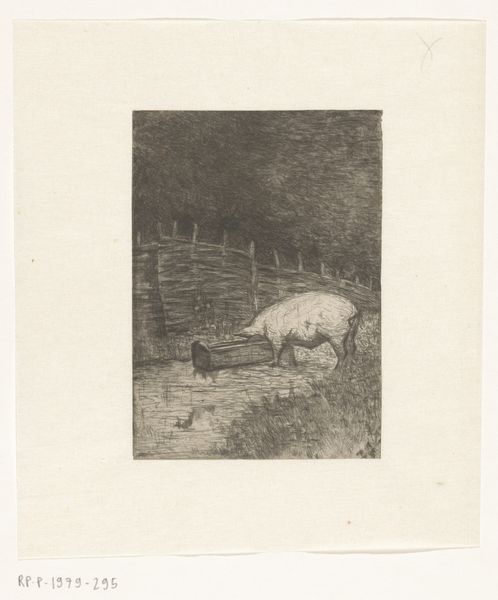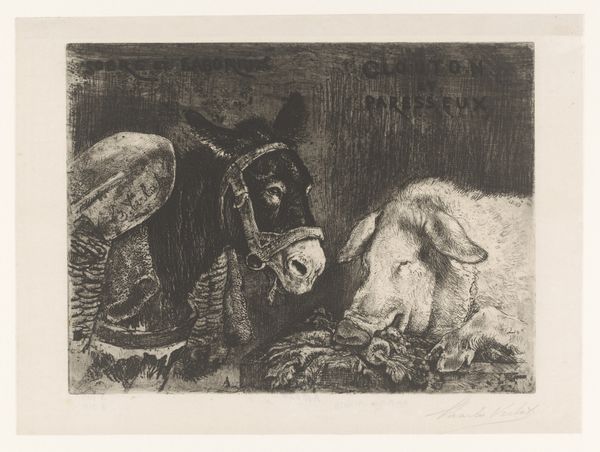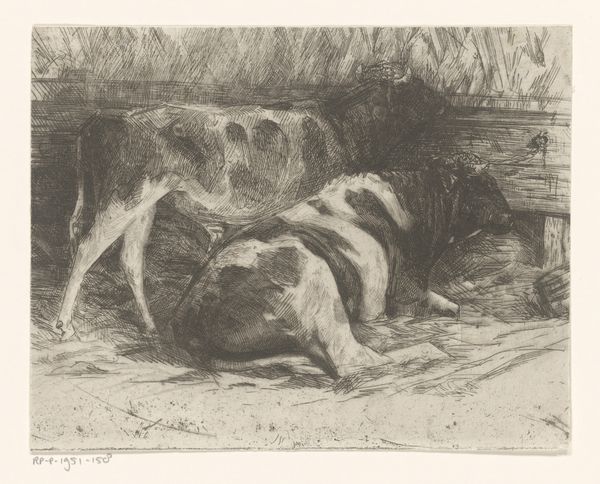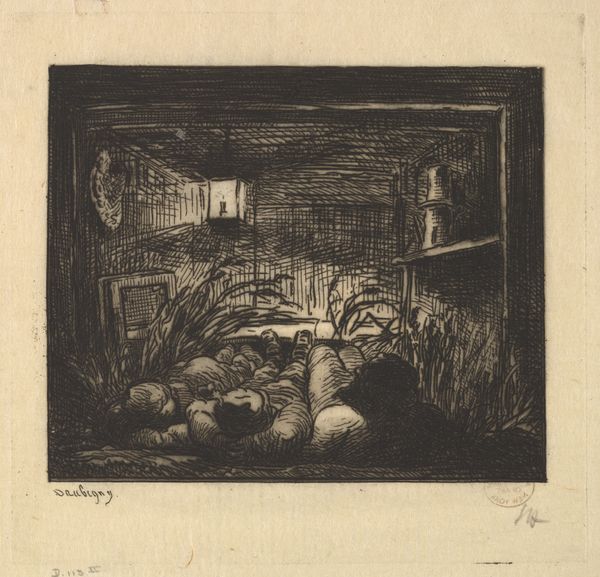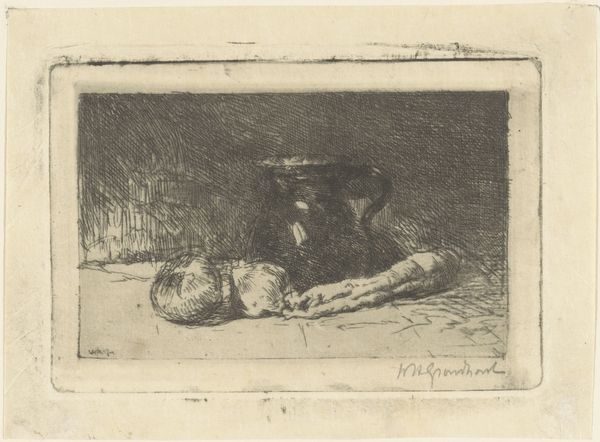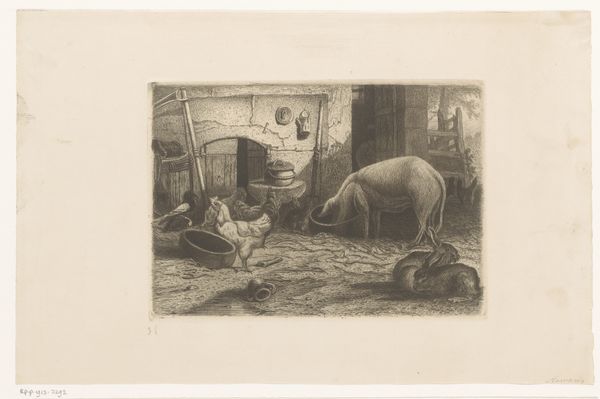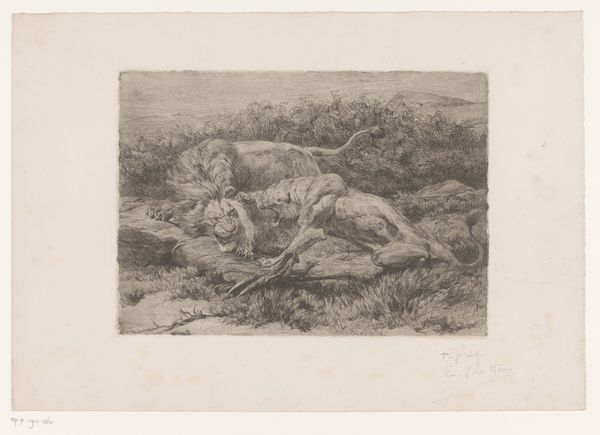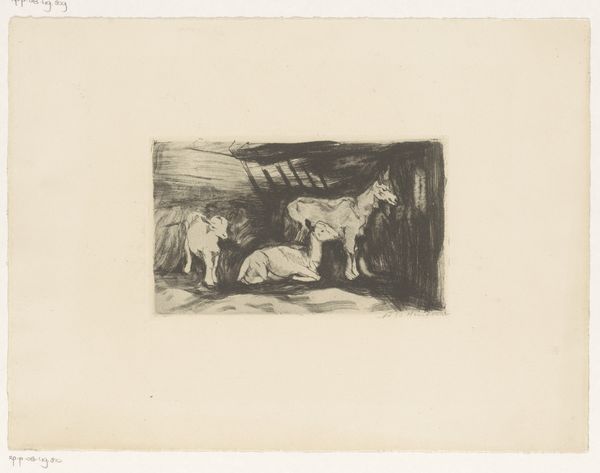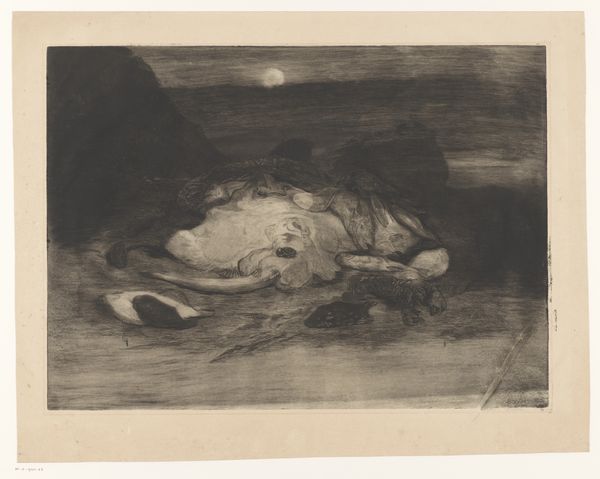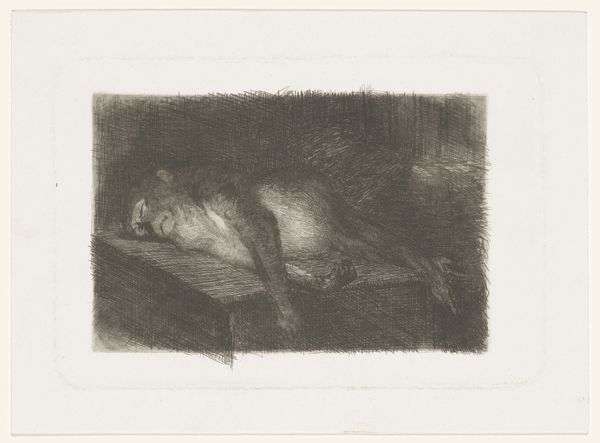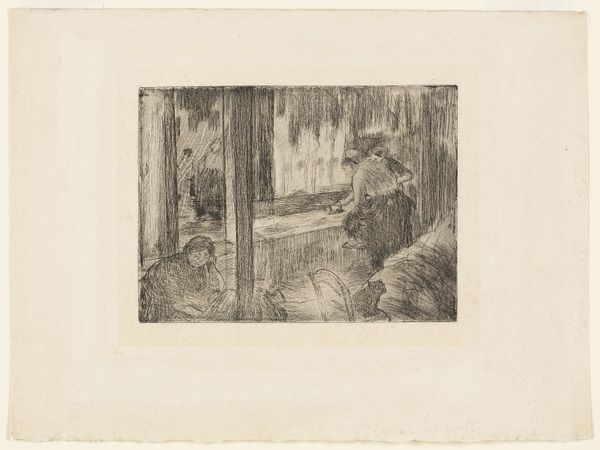
drawing, print, etching
#
pencil drawn
#
drawing
#
light pencil work
#
animal
# print
#
etching
#
pencil sketch
#
old engraving style
#
landscape
#
personal sketchbook
#
pencil work
#
genre-painting
#
realism
Dimensions: height 190 mm, width 245 mm
Copyright: Rijks Museum: Open Domain
Editor: This is "Pigs in a Sty" by Eduard Karsen, likely created between 1870 and 1941. It's an etching or print made using a pencil, featuring these chubby pigs. I'm struck by the darkness of the barn compared to the outside view from the window. What draws your eye? Curator: It's a seemingly simple genre scene, isn't it? However, consider the means of its production: an etching. Think about the labor involved in creating the plate, the acid, the press, and the reproducibility it allows. Does it elevate the everyday or commodify rural life? How does the process affect the viewing experience? Is this an act of observation, of commentary on the labor of animal husbandry, or even of social status? Editor: That's a lot to think about! I guess I was just seeing cozy pigs. So the printmaking process turns the image of simple pigs into something potentially more charged? Curator: Precisely! Look at the contrast. The dark enclosure, meticulously rendered through the etching process, juxtaposed with the bright glimpse of the outside world. This control, this manipulation of light and shadow through a specific material process – that is where the power lies. It's no longer just pigs; it’s about labor, class, and the human control of the means of representation. The act of creating this image highlights that distinction. Where is the market for this print? Who consumes images of rural labor, and why? Editor: It makes you wonder if he's glorifying or critiquing that labor by depicting the pigs instead of people doing labor. It definitely changes how I view the artwork to consider this. Curator: Indeed! It shifts the focus from sentimental representation to a consideration of production, consumption, and the complex social relationships inherent in making art about everyday life. Consider how different media would alter the depiction and, therefore, meaning. Editor: I didn’t really think about the production itself creating a layer of meaning. Curator: Exactly, it makes us aware of how social contexts can transform our perceptions of artwork and make it truly reflective.
Comments
No comments
Be the first to comment and join the conversation on the ultimate creative platform.

